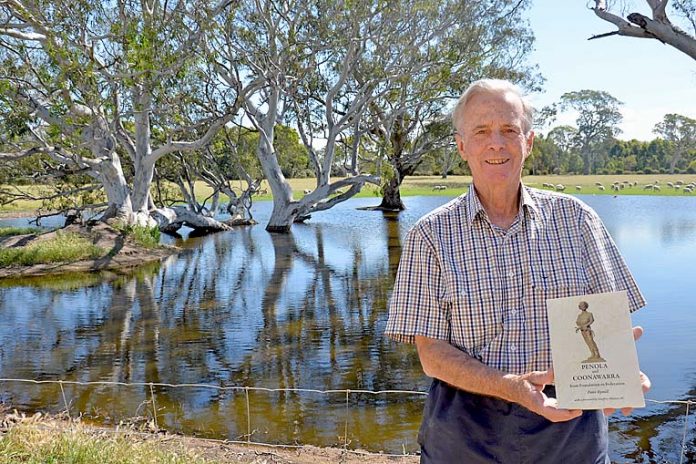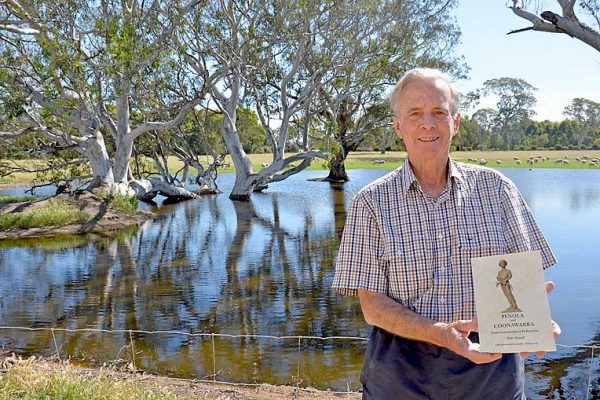

PENOLA’S geological foundation, Aboriginal heritage, European arrival and formation of Coonawarra are some of the monumental topics in Peter Rymill’s history book Penola and Coonawarra from Foundation to Federation.
Growing up on the property Penola founder Alexander Cameron developed and with John Riddoch as his great grandfather, a curiosity about Penola’s history has always inspired Mr Rymill.
He launched his book on Sunday in the garden at Heyward’s Royal Oak Hotel.
“I became interested in the beginnings of Coonawarra as I was in the wine industry for quite a while and wineries take their history very seriously, so there was a need for it there,” Mr Rymill said.
He said the process “snowballed” as he compiled a chronology of facts.
“I have written the book chronologically – which a pure historian may say is a bit dull, but on the other hand for somebody interested in local history it is easier for them to find out what happened and when,” Mr Rymill said.
He described having a community and district such as this to write about as fascinating due to the depth of history.
“Penola was the centre of the South East before Mount Gambier grew,” Mr Rymill said.
“The history has been well preserved as there is a strong Catholic interest due to saint Mary MacKillop.”
When reflecting on personal highlights in the book for the author, Mr Rymill said he was aware of but did not previously understand the significance of the arrival of the railway through the district in 1887.
“The railway revolutionised transport, reduced costs of goods getting out of the country by 75pc and made it profitable to export wine,” Mr Rymill said.
He was also fascinated and enjoyed learning more about Aboriginal history and existence of indigenous people in the area for possibly over 50,000 years.
“If my book were 500 pages long, 498 of them should be filled with Aboriginal history and only two for the last 200 years would be European history,” Mr Rymill said.
“This makes me realise just how much has been lost.”
The importance of Aboriginal tribes and the way communities and groups were separated with social interaction and fluid boundaries as opposed to physical boundaries also excited Mr Rymill.
“The Aboriginals in our area specialised with red gums, getting possums out of them and using bark to make canoes when getting into swamps,” Mr Rymill said.
“Then to the south of Tarpeena getting into Boandik country, they were more coastal orientated.”
The book was launched by Aboriginal elder Michelle Jacquelin-Furr as the community gathered to purchase signed copies.







